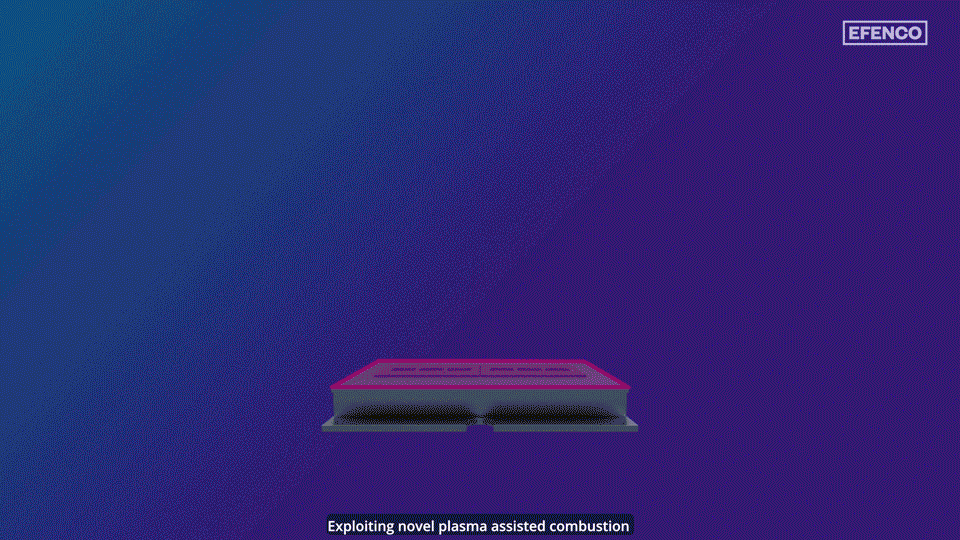We transform waste heat from gaseous fuel, such as hydrogen or natural gas, combustion into reaction efficiency far beyond the current state-of-the-art.
Our cutting-edge technology combines quantum and plasma physics, nanotechnology, electronics and electrochemistry to create an innovative solution for the energy sector.
Over 7 years of research and development have resulted in a break- through in conventional thermochemical combustion. HERC allows to increase combustion efficiency of natural gas and for hydrogen by an unprecedented 18%.
HERC generates low-temperature plasma by converting waste heat from redox reactions (and/or other heat sources) into a flux of ionizing radiation. HERC is protected by an international patent family.
HERC is embodied as a family of self-powered vacuum nanoelectronic units in a form factor from a chip to nanoceramic tiles.

According to lab and industrial tests based on standard calorimetry, using HERC technology can increase the enthalpy of fuel combustion by 20% for natural gas.
An energy balance analysis suggests tHERC generates an additional 8.86 MJ/kg of energy in the case of natural gas combustion.
According to Einstein’s equation, energy and mass are connected and can be converted from one form to another. When natural gas is combusted it releases heat energy of ≈49.2 MJ/kg with traditional methods.
However, HERC’s plasma-assisted combustion achieves a higher energy release of ≈57.81 MJ/kgdue to enhanced plasma interactions converting more mass into energy.
You can think of atoms and molecules like batteries that can store different forms of energy, such as light, heat, and mechanical energy. When these particles absorb energy, they become charged and transition to higher energy levels. This transformation creates a unique state called plasma, which is a mix of highly energetic particles. This excited state has a greater energy capacity and can release more energy when undergoing chemical reactions, leading to an increase in the overall energy released.
Mass-energy exchange remains a puzzle in the realm of low-temperature plasmas, and plasma behavior differs from that of gases and liquids. However, the lack of precise mass measurement techniques poses challenges in validating the anticipated energy values of Einstein’s equation.
Our ongoing research efforts are concentrated on creating a comprehensive understanding of the underlying mechanisms and on validating energy balance calculations to unlock the secrets of HERC’s remarkable boost in combustion efficiency.